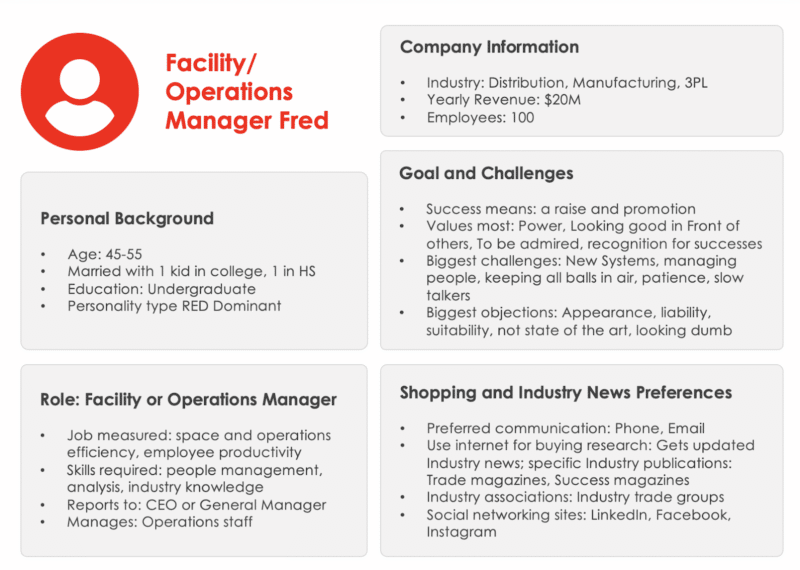Search Engine Land » SEO » Content » Psychological profiling for content creation: A deep dive
Psychological profiling for content creation: A deep dive
Having a psychological approach to creating content helps you craft more effective messages to the right audience.
Michael Bonfils on October 24, 2022 at 8:00 am | Reading time: 6 minutes
Understanding your target audience is essential to creating effective content. And one key way to do this is to use psychological classifications.
In Content creation: A psychological approach, I provided a sample of the psychological classifications that we have used, experimented with and tested.
In this article, we’ll take a deep dive into psychological profiling for better content creation, including:
- Classifications of personas.
- Culture/country differentiators.
- And some tools on how to develop your own customer personality profiling.
Why a psychological approach matters to content creation
By understanding the different psychological types of people, you can craft more effective messages to the right audience that either converts upper funnel or lower funnel.
Each type of person has different needs and desires, so digital content development that resonates with one type of person may not work for another.
For example, someone who is simply classified as a “Type A” personality is likely to respond well to content that is highly competitive and results-oriented.
On the other hand, a “Type B” personality is likely to be more responsive to content that is more relaxed and leisurely in tone. Your content can change vastly between groups.
Segmenting your personas
Segmenting your audience into different categories helps you craft messages that effectively resonate with each group.
To do this grouping, my preference is to either create or expand on your existing “personas.” When you understand the needs and wants of each persona, you can create ad campaigns that are more likely to result in vastly improved conversions.
Using the classifications that I used in my prior article Red, Blue, Yellow and Green, these personas all want the same thing, but you would need to communicate with each of them differently. For example, this is Dominant Red Fred.


Fred, who is a facility operations manager and a target customer of client X, provides us with some interesting insight into his personality under “Goals and Challenges.” (This “insight” was researched using a series of surveys and behavior analysis of existing clients.)
If we craft our content carefully based on Fred’s persona, it will result in more like-minded Freds coming through as new customers. This “psychographic” persona profile approach, which looks at people’s values, lifestyles, and personality traits, allows us to create ads or write content that appeals to people’s sense of self or their value system.
Get the daily newsletter search marketers rely on.
<input type="hidden" name="utmMedium" value="” />
<input type="hidden" name="utmCampaign" value="” />
<input type="hidden" name="utmSource" value="” />
<input type="hidden" name="utmContent" value="” />
<input type="hidden" name="pageLink" value="” />
<input type="hidden" name="ipAddress" value="” />
Processing…Please wait.
Other classification systems
Outside of the system, I’ve been using, one of the most popular psychological classification systems is the Myers-Briggs Type Indicator (MBTI). The MBTI classifies people into 16 different personality types, based on four different dichotomies. These are:
- Extroversion vs. Introversion
- Sensing vs. Intuition
- Thinking vs. Feeling
- Judging vs. Perceiving
By understanding which of these dichotomies a person falls into, you can begin to understand their needs and desires.
For example, someone who is classified as an “Extroverted Sensing” type is likely to be very active and outgoing, and they may enjoy being in the moment and experiencing life to the fullest.
On the other hand, someone who is classified as an “Introverted Intuitive” type may be more introspective and focused on their own inner thoughts and feelings.
Each personality type has different needs, so content that resonates with one type of person may not work for another.
Just for fun, watch the video, The Different Types of Moms You Meet, and think about the personality classification of each person.
Psychographic behaviors of countries and cultures
As you dig into all of this and start creating micro-characters of your personas, remember that if you do broader, multi-lingual or multi-cultural marketing, you can actually create assumptive characteristics of entire cultures.
Similar to how we ourselves are classified, our country-related behavior or personas can fall nicely into these buckets, too.
In the following color chart presented in my last article, you can see countries falling into each characteristic.


Finding and extrapolating behavioral data
We map our clients’ own customers in two ways.First is by utilizing SurveyMonkey to survey all of our clients with a multitude of personality assessment questions.
In exchange for filling out the survey, we may provide the respondents with a huge one-time discount code, a gift card or an upgrade to a more premium version of our client’s site. We also use questions as part of a more advanced loyalty program.
For example, if you would like to join the VIP section of our website, please fill in this form (which includes personality assessment questions).
Another fantastic resource, and one of my favorites, is using Crystal, a Chrome extension for LinkedIn. Here is an example of just a random (myself) person’s assessment from the plugin.


Analyzing your customers and opportunities for success
Once we have developed personas and a system of targeting your audiences through their personalities, the next step is to analyze the makeup of your existing database.
This is important so that you can see behavior areas where we are weak in promoting.
For example, from this sample, you could see that we are driving a good set of Influential and Compliant personality types. But the Dominant and Steady traits are falling out.


After some deep research, we found something completely unexpected.
The client has appealed to a large audience that ironically has the same psychological profile classifications as the digital marketing team. Here is the content writing team.


This is further proof that what one group finds as engaging content, the other group may not. We have to be careful that our marketing department speaks to all categories of personality types, not just the ones that they are in.
So we asked our client’s content team to rewrite content based on each classification and test that content.
Surprisingly, with a focus on content campaigns targeted to each personality type, our new client development went through the roof.


Create marketing content that resonates
Using psychographic profiling may sound creepy. But in the end, humans are tribal by nature.
We communicate often to be liked and understood. Most of the time, we end up in our own pool or tribe of like-minded individuals.
Understanding your existing clients and where they fall within the classification spectrum will help you:
- Write content for your customers.
- Understand whether your marketing content is only attracting a certain behavior group.
That means by writing for all types of classifications, rather than a single type classification, you may find hidden gold in improved conversions, increased audiences, and more fans of your brand.
I would encourage everyone to experiment, much as I have, to find what works and what doesn’t.
Begin to develop a relationship with your customers rather than leaving them out to feel like just another number in a database.
Opinions expressed in this article are those of the guest author and not necessarily Search Engine Land. Staff authors are listed here.


